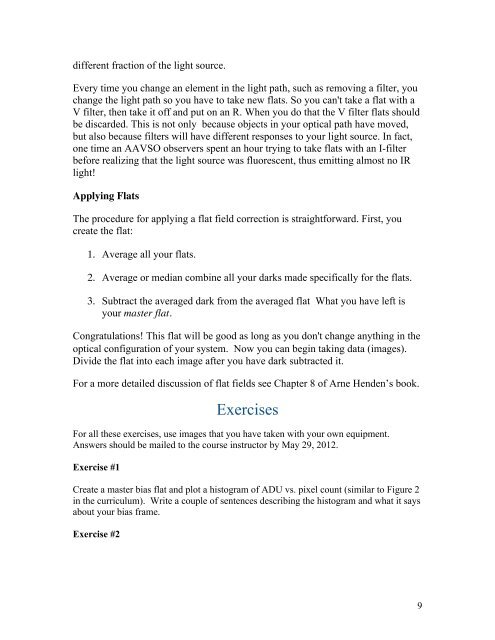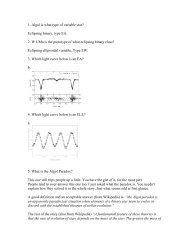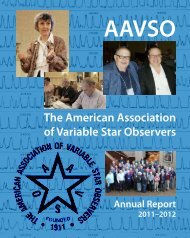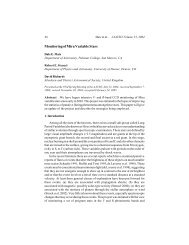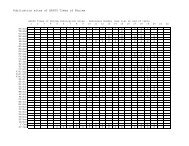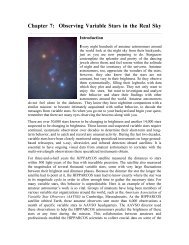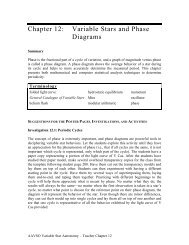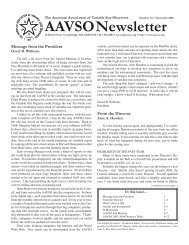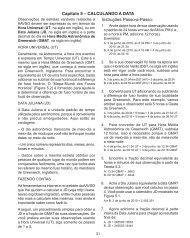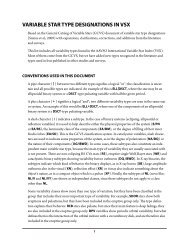CCD Image Calibration - AAVSO
CCD Image Calibration - AAVSO
CCD Image Calibration - AAVSO
You also want an ePaper? Increase the reach of your titles
YUMPU automatically turns print PDFs into web optimized ePapers that Google loves.
different fraction of the light source.Every time you change an element in the light path, such as removing a filter, youchange the light path so you have to take new flats. So you can't take a flat with aV filter, then take it off and put on an R. When you do that the V filter flats shouldbe discarded. This is not only because objects in your optical path have moved,but also because filters will have different responses to your light source. In fact,one time an <strong>AAVSO</strong> observers spent an hour trying to take flats with an I-filterbefore realizing that the light source was fluorescent, thus emitting almost no IRlight!Applying FlatsThe procedure for applying a flat field correction is straightforward. First, youcreate the flat:1. Average all your flats.2. Average or median combine all your darks made specifically for the flats.3. Subtract the averaged dark from the averaged flat What you have left isyour master flat.Congratulations! This flat will be good as long as you don't change anything in theoptical configuration of your system. Now you can begin taking data (images).Divide the flat into each image after you have dark subtracted it.For a more detailed discussion of flat fields see Chapter 8 of Arne Henden’s book.ExercisesFor all these exercises, use images that you have taken with your own equipment.Answers should be mailed to the course instructor by May 29, 2012.Exercise #1Create a master bias flat and plot a histogram of ADU vs. pixel count (similar to Figure 2in the curriculum). Write a couple of sentences describing the histogram and what it saysabout your bias frame.Exercise #29


